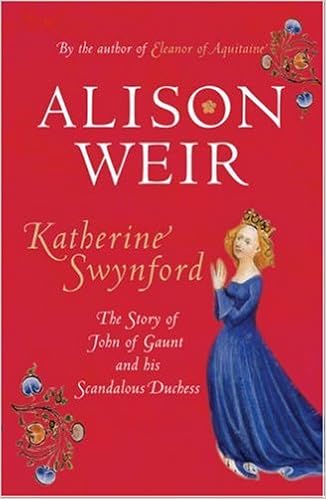
Description
From Publishers Weekly In this carefully researched and absorbing work of scholarship, Weir ( The Six Wives of Henry VIII ) investigates the events surrounding the disappearance in 1483 of England's 12-year-old King Edward V and his younger brother, Richard, Duke of York. Upon the death of their father, King Edward IV, in 1483, the brothers' uncle, Richard, Duke of Gloucester, was named Edward V's guardian. In a breathtaking chain of sinister events, Richard had Edward V and his brother confined to the Tower of London, declared his nephew's accession to the throne invalid and proclaimed himself king in June of 1483. Weir relies heavily on Sir Thomas More's History of King Richard III (written 1514-1518 and upon which William Shakespeare based his play) to conclude that Richard had his nephews murdered in the tower sometime after his coronation. Weir carefully considers alternative theories about the brothers' deaths, but argues convincingly that More had the best access to evidence and the least reason to lie. Photos not seen by PW. Copyright 1993 Reed Business Information, Inc. From Library Journal Proponents of Richard III will not be pleased by this book. Weir ( The Six Wives of Henry VIII , LJ 2/15/92) explores documentary evidence and various theories about the fate of the famous princes (Edward V and his brother, ages 12 and 10) in the Tower of London. Relying on contemporary accounts, Weir assesses credibility and compares details. Her sound research and rational arguments make a convincing case for Richard's direct involvement in the murder of his two young nephews. While she admits that there is no convincing evidence that Richard was hunchbacked or more evil than his contemporaries, Weir does show that he was supremely unpopular, largely because of the murder of the children. This is an excellent and persuasive book, one that belongs in all collections covering the history of Great Britain. - Katharine Galloway Garstka, Intergraph Corp., Huntsville, Ala. Copyright 1994 Reed Business Information, Inc. From Booklist Popular British historian Weir, author of the widely received Six Wives of Henry VIII , seeks to solve one of the most enigmatic events of British history. The facts are these. In 1483, the good king Edward IV died too early, leaving his boy-son on an uneasy throne. King Edward was also survived by a younger brother, Richard, duke of Gloucester, who coveted his little nephew's crown. Richard could not restrain himself and, in short order, usurped the throne from the boy, who, along with his younger brother, was incarcerated in the Tower of London, never to be seen again. The eternal question has been: Did Richard III, as he was known after swiping the crown, murder his two nephews while they languished frightened in prison? Weir proceeds through the documentary evidence in the case, indicating where, when necessary, other investigative historians have been misled and what paths they should have taken. With particular {x82}elan, Weir reconstructs the tumultuous period, the distinctive personalities of the cast of characters (most effectively the notorious Richard III), and arrays the evidence to point to ole King Dick as indeed the perpetrator of the murders of the princes in the Tower. For all popular history collections. Brad Hooper From Kirkus Reviews The methods of a Mafia boss characterized the career of Richard, Duke of Gloucester, who in the 15th century briefly ruled England as Richard III. Here, Weir (The Six Wives of Henry VIII, 1992) throws new light on this horror story--and especially on the mysterious disappearance of the two boys who stood in Richard's way. In the 15th century, the succession to the English throne was never stable. A crisis occurred when the saintly Henry VI had a nervous breakdown and was ousted in 1465 by Edward IV. Henry was confined in the Tower of London, part of which was a royal palace, and eventually he was murdered there on Edward's orders, probably by Edward's youngest brother, Richard of Gloucester. When, in 1483, Edward died prematurely, Richard seized power as Lord Protector of the Realm, since the heir apparent, Edward V, was only 13 years old. Within weeks, Richard coerced Parliament into declaring him king on the supposed grounds that the late king's marriage had been invalid. Edward V and his brother, the ten-year old Richard, Duke of York, were removed to the Tower of London, never to be seen again, and most people assumed that Richard had ordered the princes murdered. Richard's former allies began to plot against him--but the monarch died in 1485 at the Battle of Bosworth. Here, Weir relates these many intrigues and political executions in a highly readable, brisk manner that's at once vivid and scholarly. She makes special use of older accounts written by Dominic Mancini, the Croyland Chroniclers, and St. Thomas More, and she emphasizes the role of Edward IV's queen and her ambitious family. Above all, Weir argues her way convincingly through recent scholarship and the ongoing debate as to the princes' fate and Richard's role in it. (A genealogical table is provided.) A fascinating historical whodunit in which truth is more sordid than fiction. (Eight pages of b&w photographs) -- Copyright ©1993, Kirkus Associates, LP. All rights reserved. From the Inside Flap hensive and insightful, THE PRINCES IN THE TOWER offers a unique perspective on a profound mystery." Faye KellermanDespite five centuries of investigation by historians, the sinister deaths of the boy king Edward V and his younger brother Richard, Duke of York, remain one of the most fascinating murder mysteries in English history. Did Richard III really kill the young princes, as is commonly believed, or was the murderer someone else entirely? Carefully examining every shred of contemporary evidence as well as the dozens of modern accounts, Weir reconstructs the entire chain of events leading to the double murder to arrive at a conclusion Sherlock Holmes himself could not dispute. Read more
Features & Highlights
- "Comprehensive and insightful, THE PRINCES IN THE TOWER offers a unique perspective on a profound mystery." Faye KellermanDespite five centuries of investigation by historians, the sinister deaths of the boy king Edward V and his younger brother Richard, Duke of York, remain one of the most fascinating murder mysteries in English history. Did Richard III really kill the young princes, as is commonly believed, or was the murderer someone else entirely? Carefully examining every shred of contemporary evidence as well as the dozens of modern accounts, Weir reconstructs the entire chain of events leading to the double murder to arrive at a conclusion Sherlock Holmes himself could not dispute.





